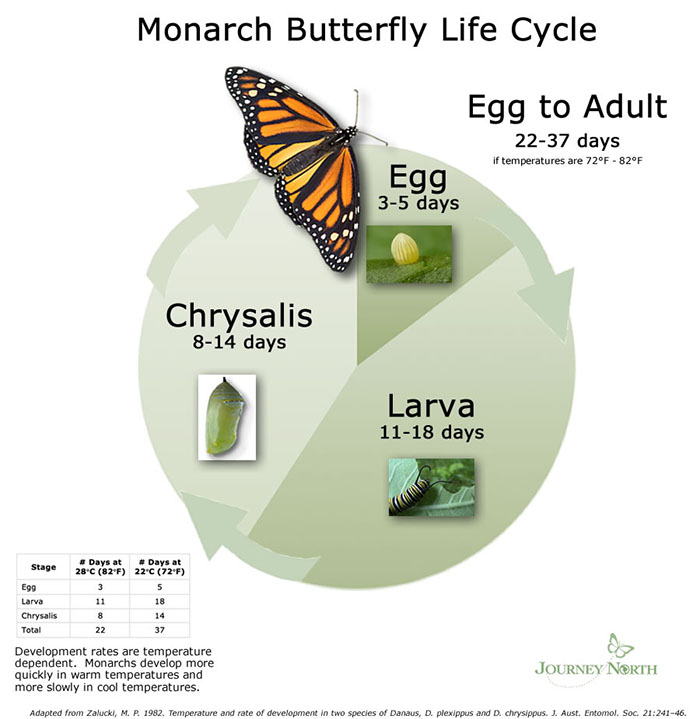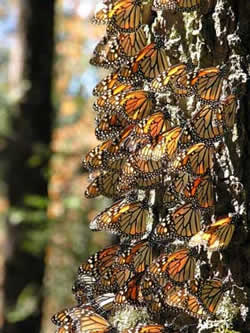Monarch Butterfly Biology
Life Cycle
The monarch butterfly, like other insects, has several life forms and stages prior to reaching adulthood. The monarch has four distinct life stages: egg, larva (caterpillar), pupa (chrysalis), and adult.

Life Cycle Notes
- A female Monarch butterfly lays from 100 to 300 eggs during her life. The eggs hatch about four days after they are laid.
- When larvae first hatch they are less than 1 centimeter (cm) and grow to be about 5 cm. The stages between larval molts are called instars.
- In as few as five days, the monarch develops from a pupa to an adult. The completion of the four life-stage process is called complete metamorphosis.
- The emergence of the butterfly from the pupal stage to an adult is called eclosion.
The Migrating Generation
During the summer breeding season, monarchs live from 2-5 weeks during which they mate and lay the eggs that become the next generation. The last generation of the year does not become reproductive and is said to be in “reproductive diapause”. These butterflies are the ones that migrate to Mexico where they overwinter. These butterflies become reproductive in February and March as they move north, laying eggs on milkweeds as they progress northward into the United States. Some of these butterflies can live as long as 9 months!
The migratory generation has an enormous task ahead of them. Weighing less than a gram, these unique butterflies will fly between 2,000 to 3,000 miles to an overwintering location in Mexico.
Monarchs have up to four generations each summer, each one traveling a little further north than the last. The last generation of the year migrates south.
 Monarchs congregating on a tree at El Rosario Sanctuary, Michoacan, Mexico. Photo by Sue Sill, LCHPR, Inc.
Monarchs congregating on a tree at El Rosario Sanctuary, Michoacan, Mexico. Photo by Sue Sill, LCHPR, Inc.

